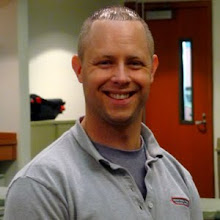On Thursday July 28th, I experienced a proliferated ulcer and had to be sent directly to the hospital for emergency surgery as my abdominal cavity was filled with air, fluid, etc… I’ve been hit quite a few times in my abdomen, but this was seriously the worst pain I’ve ever endured. Once at the hospital, my wife joined me as the surgeons planned their strategy. They performed the standard CT scans and other assessments to get as much information as they could.
However, it turned out to be more.
During the surgery, the surgeons noticed that I had multiple tumors on my liver, which apparently was identified previously during the CT scan as something “abnormal with my liver”. These tumors were biopsied and diagnosed as “carcinoid” tumors which could very easily be life threatening.
I really didn’t understand the diagnosis until Friday morning after the surgery when my wife explained it to me. She was in tears and I could tell she was on the verge of breaking down. Immediately upon finding out, I let this news take 30 seconds of my life. During that time I allowed myself to feel panicked, angry, confused and accusatory. After that, still feeling the effects of the anesthesia from the night before, I informed the nurse and my wife that I wanted to take a walk.
I counted 235 steps.
I laid back down exhausted and told my wife that I took 235 steps and this is where it will begin. From that time on, I will focus on fighting this and progressing the only way I know how: With willpower, fortitude, optimism and intelligence.
I was released one week later with every intention of creating my own rehabilitation program for the next 2 weeks as I heal from the surgery.
Here is my incision 8 days out of surgery.
My rehabilitation plans follow a 2 week foundation based on the healing of the incision - With a frequency of daily training with short duration bouts.
· Stage of healing: Repair Phase
· Indicators of limitations: Pain during ROM, dysfunctional ROM due to injury/surgery
· Indicators of success: time/reps/sets, RPE, Sex appeal (hey, I want to look damn GOOD for my wife)
MILESTONES
1. Maintain current mobility
o Hip
o T-Spine
o Contralateral movement
I have lost some mobility, so my goal is to maintain what I currently have until I can load my body with increased resistance and/or more challenging exercises to improve joint mobility. Research has shown that improving mobility can lead to improved stability and overall function.
2. Increase stability
o Lumbosacral (transverse abdominus & multifidi engagement)
o Scapulothoracic
o Glenohumeral
Stability is best suited by increasing or maintaining joint mobility. My focus here is address weaknesses in my lumbo-pelvic complex as well as engaging my ST/GH stabilizers. By training the transverse abdominus and multifidi using body weight and limb movement, one can avoid potential shutdown of the glutes which has been linked to low back pain. I’m already “hunching” over slightly from my surgery, so this is a concern for me as I heal. Check out Hodges & Richardson research as well as McGill on trunk/spine stability protocols.
3. Increase strength
o Glutes
See above. Strong glutes = increased ROM/mobility, optimal function during squatting, stepping, etc… and will spare my erector spinae and quadrates lumborum from firing overtime – Plus work with my deep trunk stabilizers to create an optimal pattern of movement during squatting, stepping, etc… that has been altered since the surgery.
4. Increase endurance
o Shoulder complex
Encourage appropriate scapular function and force couples while improving rhomboid, serratus anterior, trapezius and rotator cuff endurance.
5. Maintain breathing patterns
o T-Spine
o Dead Bug
Just as Mr. Miyagi stated in Karate Kid: “No breathe, no life!” I will be focusing on elevating the rib cage during forceful breathing; engaging my diaphragm and other thoracic elevators and depressors while maintaining contra-lateral movement patterns.
Here is my training program for the next 2 weeks based on the information above:
Preparation:
· Treadmill/Walking 3 minutes (if I feel like it)
· Low intensity dynamic stretches: knee hugs, pull backs, leg pendulum swings, over unders
Body:
1. Dead Bug
2. Floor Bridge
3. T-Spine Floor Rotation
4. Iso Push Up with hip flexion & extension
5. Elevated Push up
I utilize the exercises in circuit fashion, performing 10-15 reps based on RPE with 2-3 rotations. It usually takes me about 5-8 minutes to complete a couple rotations. Check out the video below:
Recovery:
As much as I’d like to hit some soft tissue, I’m not quite able to support my body weight on a foam roller or any device, apply forces necessary with the stick (on a 10 lb lifting limit) and I just don’t have a bedside manual therapist (any volunteers?). So I’m focusing on low intensity, old school static stretching.
· Hamstring static stretch
· Hip flexor static stretch
· Pectoralis Major static stretch
So that’s my approach - From 235 steps to my first training regimen. I have every intention of using this to getting my ass back to the gym and moving steel again.
In closing, the doctors believe that I have had the tumors for anywhere from 5-15 years - That they are slow and possibly “well-behaved”. However, I have scheduled examinations and tests throughout the next two weeks to help give the doctors the information necessary to create a plan.
With these plans, my wife and I have not been idle. We’ve been using our time researching nutrition therapies, planning exercise progressions (such as the one above) and making time for reflection and meditation – something I incorporated often in my life years ago, but somehow neglected over the past half decade.
Regardless of diagnosis or direction, I feel optimistic and thankful. Particularly for my friends, family, students and colleagues who have taken time to call, email, text or stop in for a visit. To everyone: THANK YOU.









